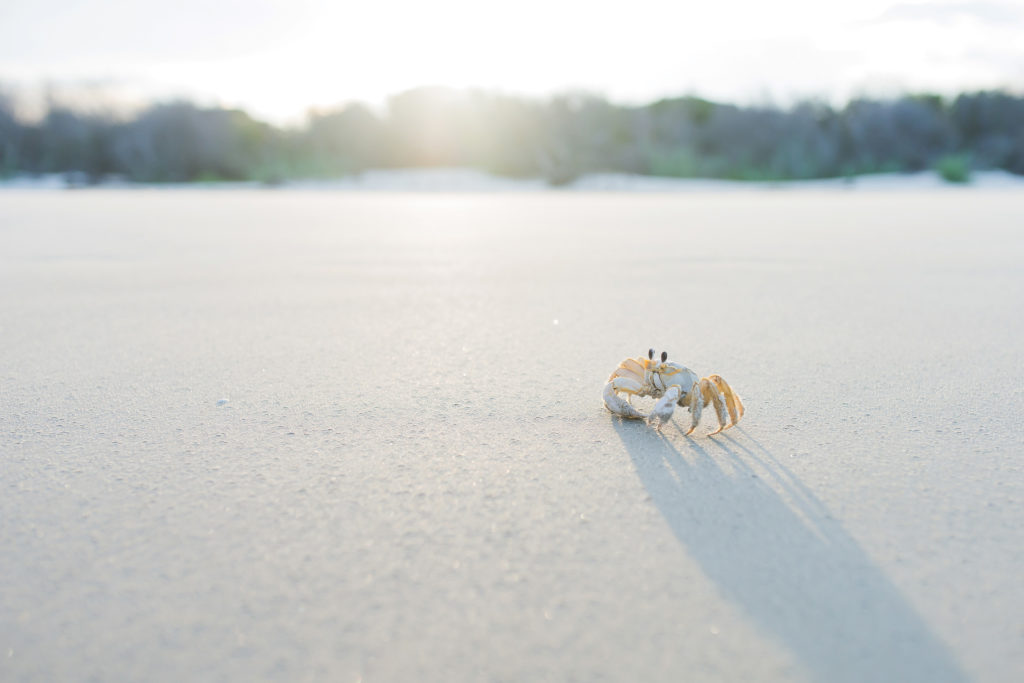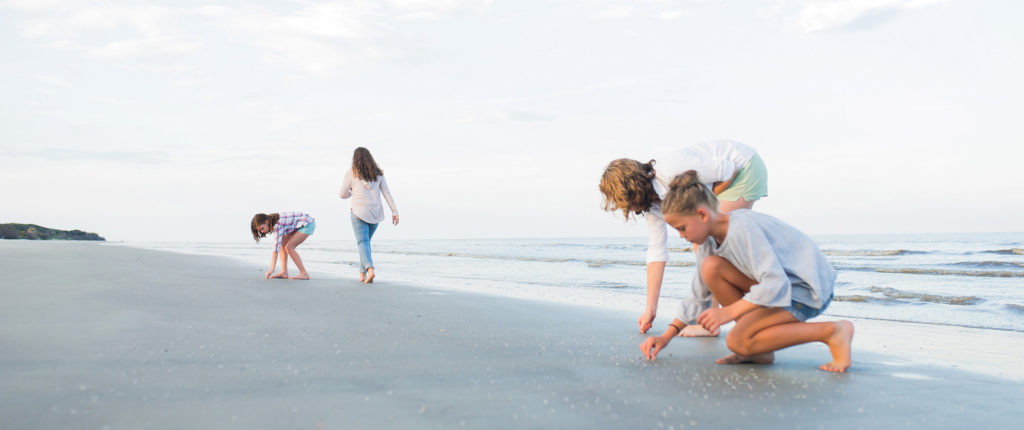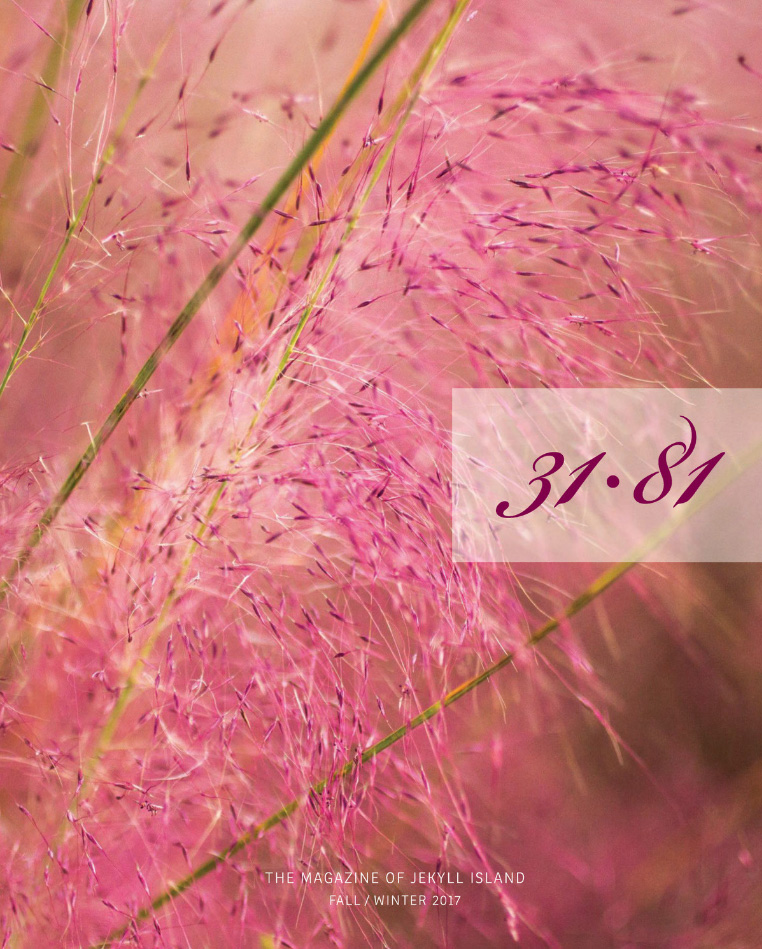With a little patience, shell hunting on Jekyll Island yields a bounty of oceanic treasures.
By Christine Van Dusen
Photography by Brian Austin Lee
Jekyll Island’s sky is such an impossibly beautiful blue and its white-capped waters so serene, even the most stressed and cynical city person could get lulled into a Zen-like state. But not me. I’m not looking at the sky or the sea. My head is down. My eyes are focused a few inches in front of my feet as I tiptoe down the beach. I’m barely blinking as I scan the tideline that’s scribbled on the sand in silt. Because I’m not here for the scenery. I’m here for the shells.
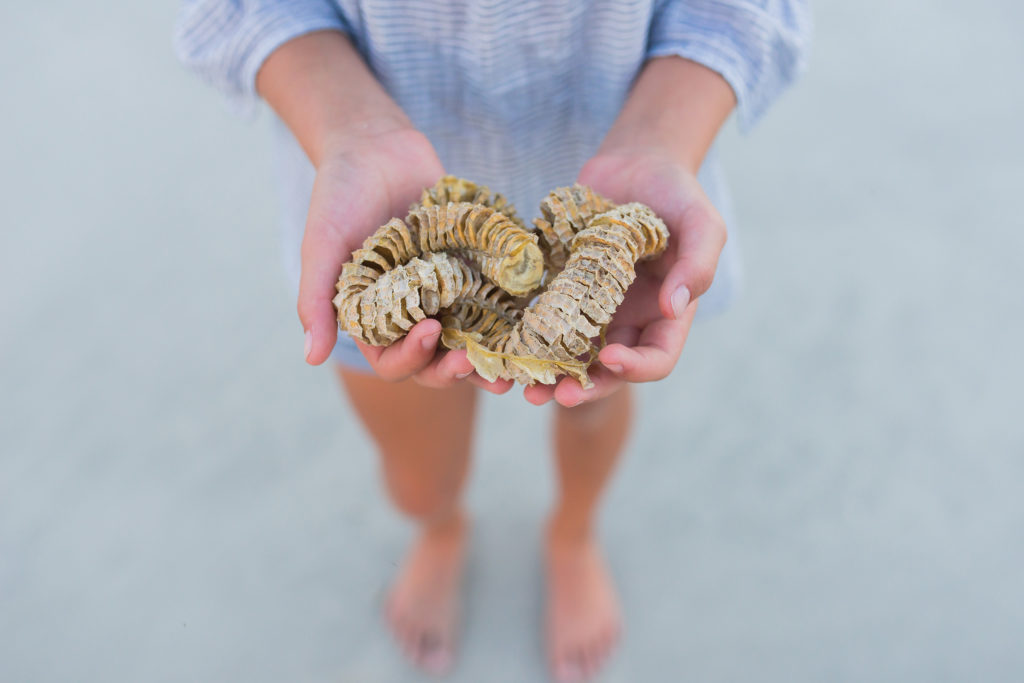
I’ve come to Glory Beach—named after the 1989 movie Glory, which was filmed here—with my husband and two sons, ages five and seven, to explore what I’ve been told is one of the best stretches of sand for finding Jekyll Island’s most interesting seashells. It’s unraked and unmolested. No one is sweeping the sand with metal detectors (they’re forbidden). The only marks I see are footprints both human and avian, as well as the occasional turtle track from the water to the dunes.
Shell hunting is an exercise in patience and attention to detail, two qualities I often lack. I don’t like to browse, bargain-hunt, or comparison-shop. I like to point to the first big, shiny thing I see and say, “That’s good enough.” I also don’t like to get up early in the morning, which is when you can find the finest shells on Jekyll Island. Even better is the morning after a big storm has churned up the ocean’s contents and coughed them onto the shore.
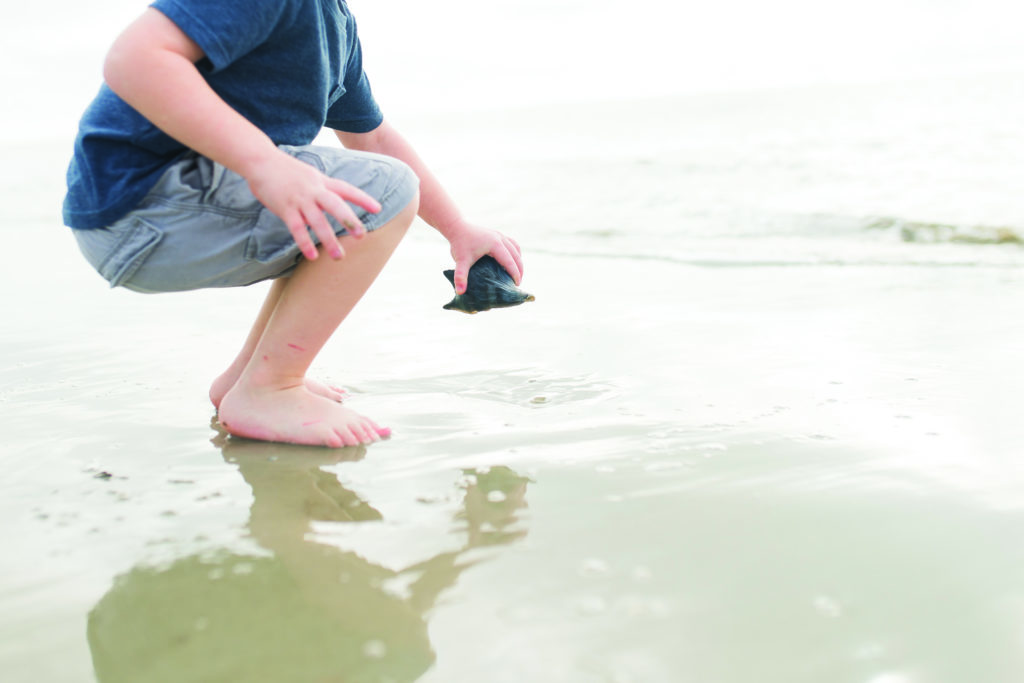
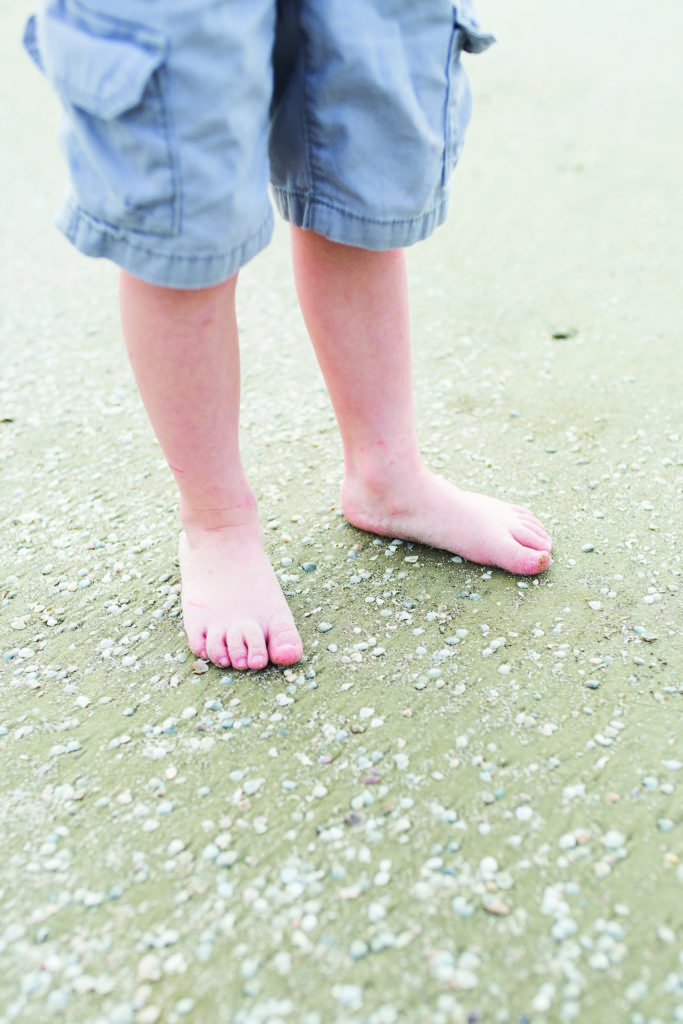
The kids go off to build a sandcastle and protect it from the creeping tide. I continue my quest, stepping over a dead jellyfish to examine the mottled shell of a speckled crab. The wet sand is dotted with adorably tiny coquina clam shells, which I inspect before coming upon what at first appears to be a branch cluster from a tiny tree. It’s actually the skeleton of a sea whip coral, formerly covered in a colony of tiny polyps.
I’m wishing for something like a knobbed whelk, Georgia’s state seashell, or even a couple of sand dollars, which I’ve mostly seen on the 1970s jewelry my mom used to wear. Even if I do come across them, I have to make sure they’re dead. A sand dollar, for one, should only be taken if it’s smooth and bone-white or nearly so; if it’s brown-gray and covered in fuzzy little hairs that move, or if it leaves a yellow residue on your hand, you need to put it back where you found it so it can go back to the business of living.
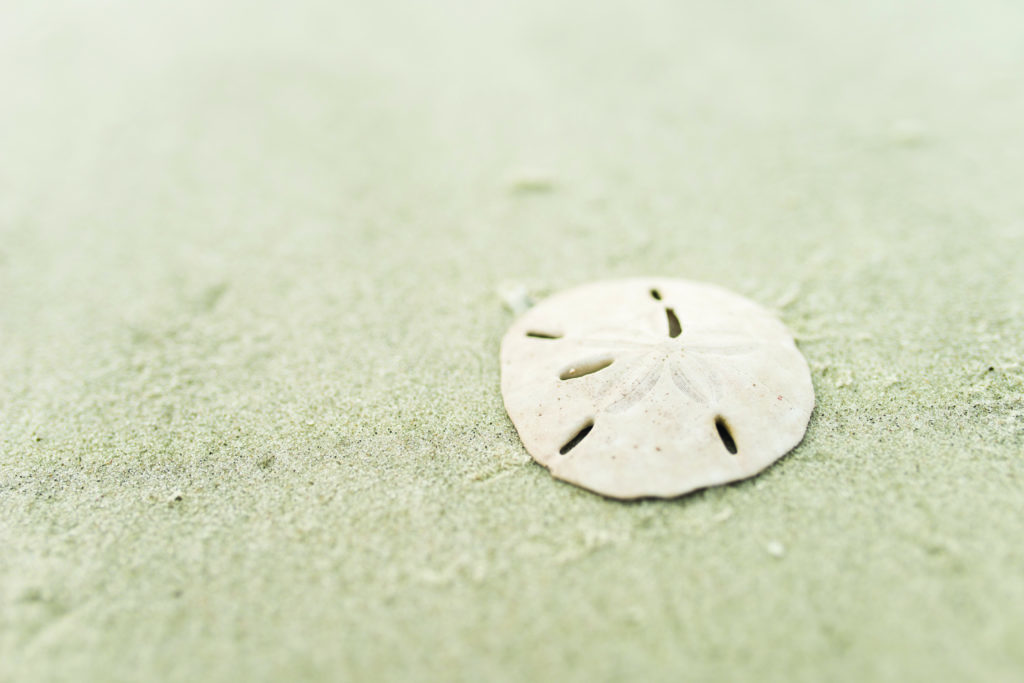
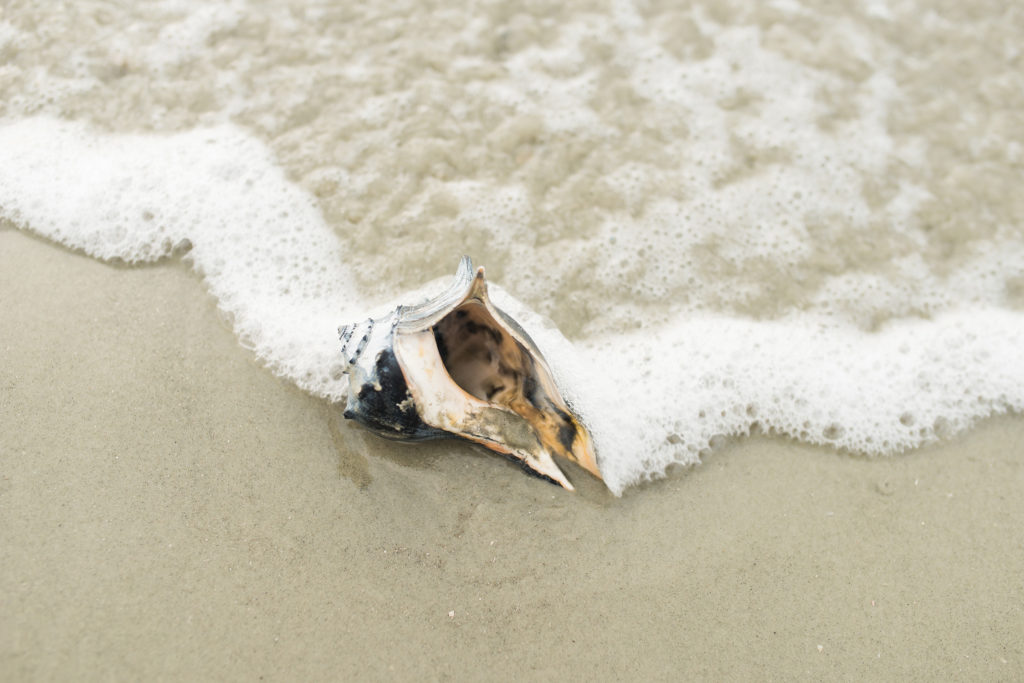
I also tell myself not to get greedy. It’s important not to pick the beach clean because animals like hermit crabs need empty shells for when they’re ready to move to bigger digs. I remind my boys about this, and they each grumpily empty one heaping pocket back onto the beach.
I’m now twenty minutes into my mission, and I’m thinking about giving up when I come upon it: my first good find. It’s a shark eye. The shiny shell—built and once occupied by an Atlantic moon snail—fits snugly into my cupped palm. I stare into its dark inner whorl, which curls out toward the edge of the shell. It has an almost opalescent sheen.
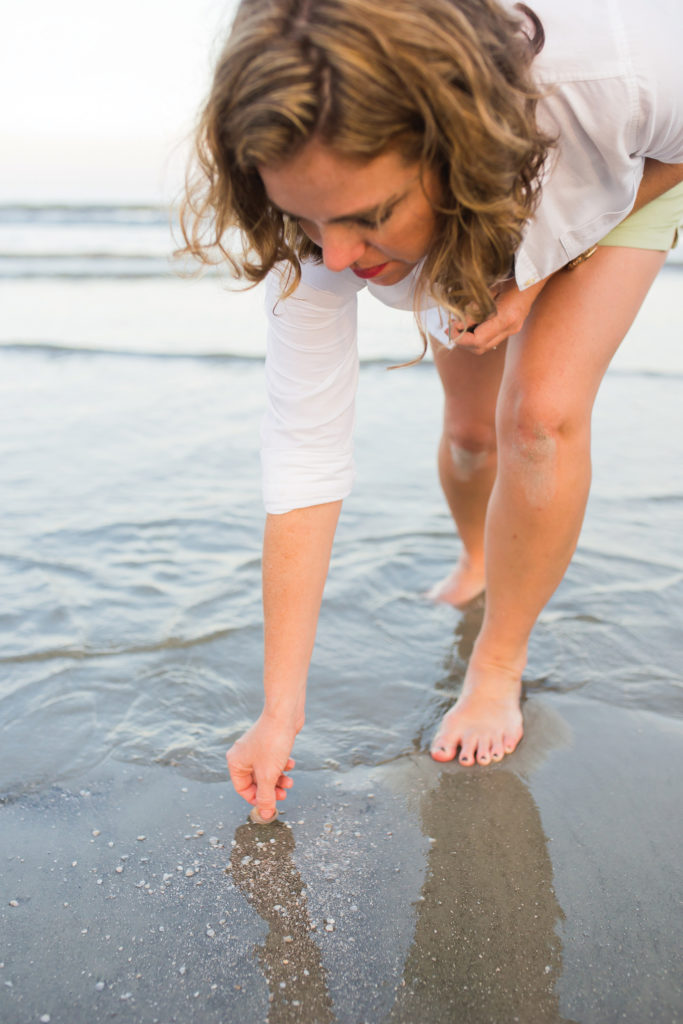
And suddenly I understand the appeal of beachcombing. It reminds you to take it slow and steady sometimes, and that patience and persistence can be rewarded. That nature has tiny treasures to offer those who take the time to look for them. And now I have a memento I can bring home to remind me of that message, and of what makes Jekyll Island so special.
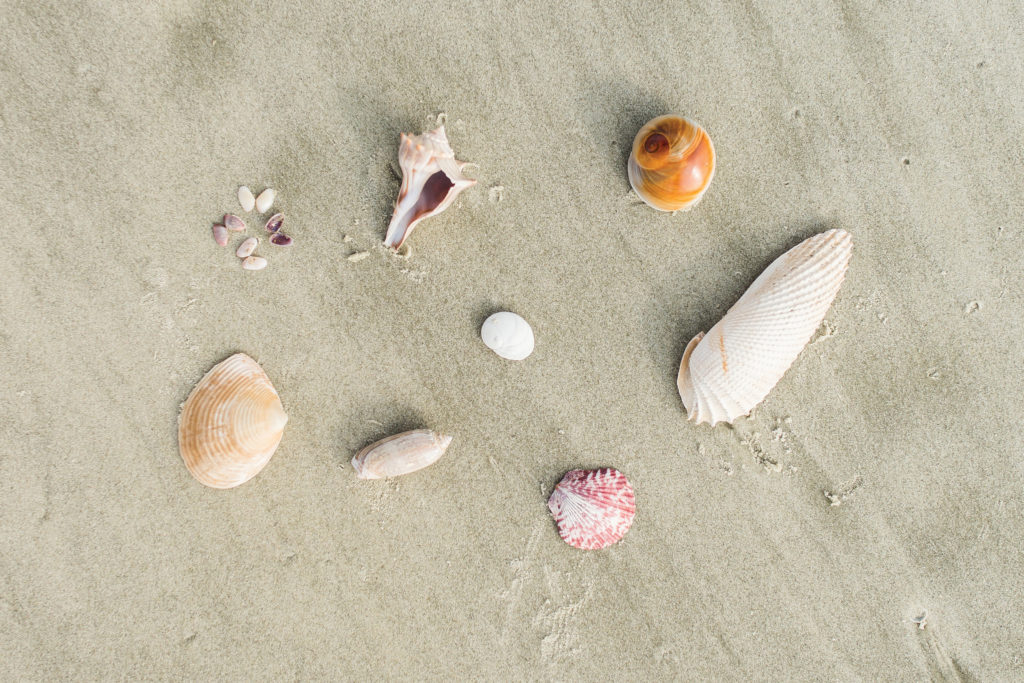
Tiny Houses
Jekyll Island is a veritable treasure trove for the patient beachcomber. But before you start sweeping the sand, bear two things in mind: Let living things lie, and leave some shells behind for creatures that need new homes.
Shark Eye
You know how, in old cartoons, a character’s eyes would get all swirly when he was hypnotized? That’s what this glossy and globe-shaped shell looks like, with a dark spiral that lightens as it widens. Fun fact: The shark eye snail softens the shell of its prey by secreting an acid, then drills a hole using a toothed tongue.
Angel Wing
The ridges along the edges of this slim, white shell can look a little bit like feathers, with little ribs. It seems fragile, but it’s not; experts say this mollusk can dig through coral, wood, and some rock.
Calico Scallop
If you have a quilter in your family, you’re likely to understand where this scallop gets its name. The creature’s shell resembles the inexpensive cotton fabric that’s often printed with tiny flowers and popular for quilting squares. In the wild, this scallop can swim as fast as nine body lengths per second to avoid predators. By the time you see it on the shore near shallow waters, the scallop will likely be gone from its fan-shaped shell.
Knobbed Whelk
With spiky knobs on its “shoulders” and the ability to grow as long as twelve inches, this glossy, thick, and strong shell—typically sand-colored with an orange to brick-red interior—tops beachcombers’ lists and is therefore difficult to find. After a storm, you should look along the shoreline and in shallow water for this, the state seashell since 1987. When you hold it so the opening is facing you, you’ll see it has six clockwise coils. If you find this shell, you might also come across what looks like a snake’s shed skin. Called a mermaid’s necklace, it’s actually a paper-like chain of egg cases that once held the knobbed whelk’s eggs.
Baby’s Ear
Though this shell has an adorable name and a white exterior with the graceful curve of a little ear, don’t be fooled. The moon snail that lived inside it was predatory and carnivorous, with the ability to extend its body so far outside its home it could almost cover it.
Lettered Olive
Smooth and cylindrical, this cream-colored and narrow shell gets its name from the red markings that—if you squint and use your imagination—can look something like letters. The predatory sea snail that once lived inside used its foot to capture and drag prey below the surface of the sand.
Coquina Clam Shells
In these tiny shells that dot the wet sand, you might spy a little hole in the top that makes them look ready-made for stringing on a necklace. That’s the mark of the shark eye snail’s tooth-studded tongue (see number 1).
Channeled Duckclam
This shell has broad concentric ribs and two siphons, one for feeding and the other for expelling water. You’re unlikely to find both halves. If you do, the clam is probably still living inside, and you should leave it be.
Beachcombing, from the Best
If you’re planning to hunt for shells or learn more about living creatures while on Jekyll Island, pack these references in your beach bag. Both are available at the Georgia Sea Turtle Center gift shop.
Living Beaches of Georgia and the Carolinas
by Blair Witherington and Dawn Witherington (2011)
When experts hunt for shells on Jekyll Island, they consult this book. The guide’s color photos make IDs a snap.
A Beachcomber’s Guide to Georgia’s Barrier Islands
by Jennifer Smith and Taylor Schoettle (2011)
Illustrations give shell hunters an easy way to identify marine life, resident animals, and the creatures responsible for every ripple in the sand.
